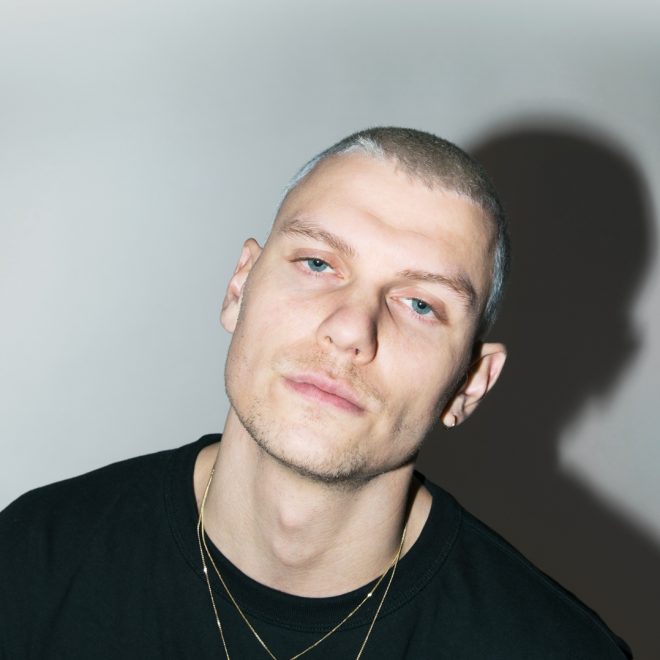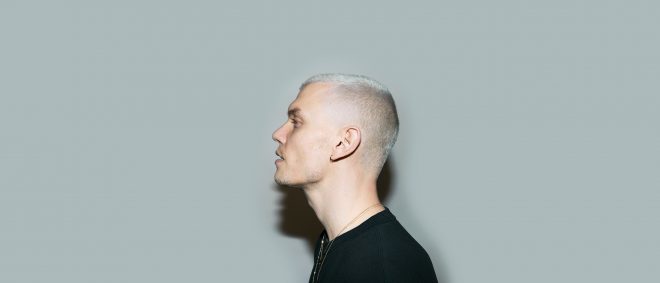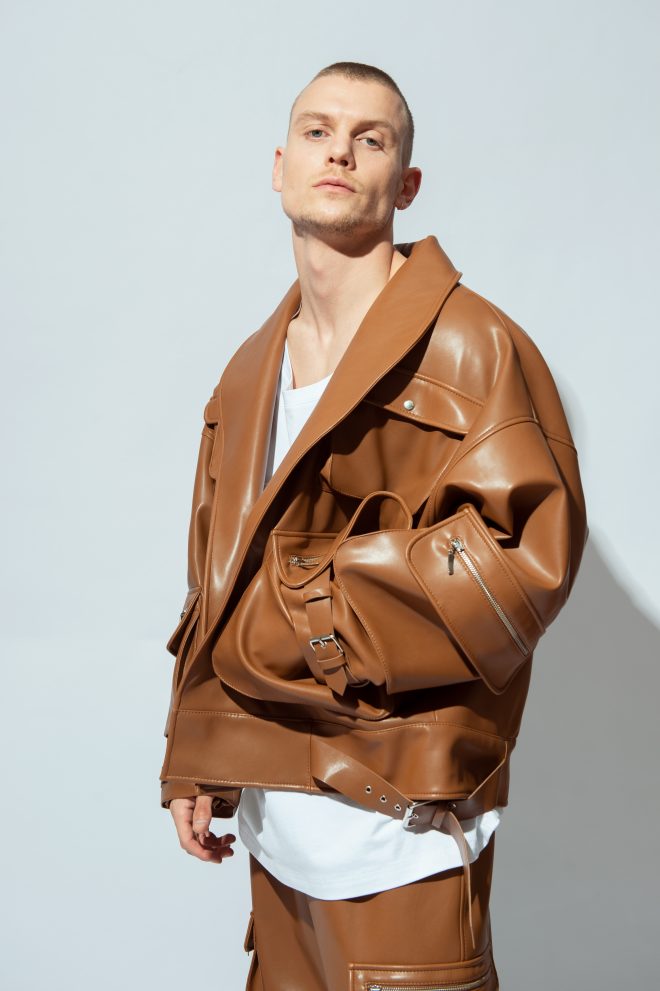From Galaxy to Grit: Sacha Harland finds his own frequency

After making waves as one half of The Galaxy and collaborating with names like Yellow Claw and Sophie Simmons, Dutch producer Sacha Harland has stepped out solo — and stepped up the energy. Fueled by a love for high-BPM rave music and a no-compromise creative mindset, the Hague-based artist has found new fire in his productions, channeling raw emotion through relentless momentum.
With support from the likes of Indira Paganotto, ØTTA, and Oliver Heldens, his breakout track Filthy Rich signaled a bold new direction — one that's already taken him on tour across Europe and Asia. Now, with the release of Let Me Be on Act Like Adults and his Ibiza debut at Amnesia on the horizon, Harland is sharpening his sound and embracing the power of connection through club culture.
We caught up with Sacha to talk rave roots, emotional BPMs, and why 2025 might just be his biggest year yet.
You’ve taken a sharp turn with your solo output recently. What was the tipping point that made you say: it’s time to start from scratch, on your own terms?
Honestly, the tipping point came during the lockdowns. Like a lot of people, I had this strange pause where I could finally shut out all the noise and just mess around without expectations. I started digging into what really made me tick musically – not what I thought I should be making.
And I kept gravitating back to this sound that had always been there: up-tempo, trancy, hard-house stuff. That’s what was blasting on the radio when I was six or seven, when I didn’t even know what dance music was, but I felt it in my chest. That early imprint never really left. So I started playing with that energy again, and suddenly it just made sense. It felt like starting over, but in the best way – like finally making something that’s fully mine.
Let Me Be is a full-bodied, high-impact rave cut. What inspired its energy, and what did you want to express through it?
With Let Me Be I was chasing that balance I’m always drawn to in dance music: the tension between emotion and release. I love tracks that give you space to feel something, but then also demand you move. That push and pull. So the idea was to create something that has this emotional undercurrent running through it, but then it tips over into high-impact energy. For me that’s the sweet spot in rave music, letting a feeling build and then letting it erupt into something physical and raw.
Was there a specific moment, feeling or idea that shaped its rave-fuelled intensity?
It actually started with this rave-y piano loop I’d been playing around with. It had this raw energy but also something emotional in it, which I really liked. Then at some point I tried laying a vocal over it, and the idea to rework Let Me Be Your Fantasy by Baby D just clicked.
It felt like the perfect fit. The vocal brought out the emotion, and the piano gave it that drive. Once those two elements locked in, it became clear the track needed to live at a higher BPM — something made for the rave. From there, it all came together pretty quickly. It was just about shaping it into the right form so it could hit on the dancefloor without losing that emotional thread.
Filthy Rich was a breakthrough moment. It’s raw, confrontational, and unapologetic. Was there a specific message behind the track, or was it purely about energy?
Filthy Rich actually came together during this writing trip I did with a friend at a cottage in the Veluwe. We were working on music for both our projects, just getting out of the usual environment. His girlfriend, who’s also a musician and songwriter, joined us for a few days. I had this rough demo lying around that already had this intense drive to it, and I knew I wanted to channel the kind of energy I’ve always loved in hardcore and gabber, but shaped into something more hard dance.
I played her the demo and asked if she felt like writing something for it. We recorded the vocals right there in that little cottage in the woods — and that take ended up being the one I used for the final version. It wasn’t overthought. If anything, it was about capturing that raw energy and locking it into a form that could hit in the club. So yeah, if I’m being honest, it was mainly about energy.

Your tracks feel physical — built for movement and sweat. How important is that bodily connection in your creative process?
For me it’s less about a physical connection while I’m producing, and more about imagining what the track is supposed to do. I’m always thinking about the purpose of a track — where it lives, how it moves people. So yeah, the dancefloor is usually in the back of my mind.
I try to picture a crowd hearing it for the first time, how it builds, how it releases, what kind of reaction it sparks. It’s definitely a bodily thing, but more in a visual or emotional way during the process. I’m not sitting there jumping around in the studio, but I am building something that I hope people can lose themselves in — physically — when it’s played out.
There’s also a real sense of momentum in your productions: fast tempos and relentless energy. What draws you to high BPM, and what do you feel it unlocks emotionally or energetically?
I think what draws me to high BPM is that it removes the question of whether a track has enough energy to move to. There’s no room for hesitation. When it hits, it moves you — whether you planned to or not. That kind of momentum just does something to a crowd. I’ve always loved the bouncy, high-tempo stuff from the ’90s.
It gave dance music this almost unstoppable quality. And like I mentioned earlier, that was my first real introduction to dance music as a kid, hearing those fast, euphoric tracks on the radio. That energy stuck with me. When you combine that tempo with the right chord progressions and a bit of emotional weight, for me, that’s the full picture. It’s everything I want a track to be.
Touring across Europe and Asia must give you a broad view of club culture. Have any specific scenes or cities shifted your perspective or influenced your sound?
Every club or festival I play inspires me in different ways. It could be a conversation with someone on the dancefloor or just watching the artist before or after me. Especially last month when I was touring the UK with The Rocketman and Maddix, I really felt how much dance music is about connection.
That connection with people is honestly one of my biggest sources of inspiration — whether I’m making music or playing it. Whether it’s at big events like ADE, a hazy Berlin club, a jumpy high-energy venue in the UK, or clubs I’ve played in China and Thailand, what sticks with me most is being around people who are really there to connect and vibe with the music. To me, that’s the heart of dance music – the shared energy and the feeling that you’re part of something bigger.
Dutch artists have shaped every chapter of dance music history. Do you feel connected to that legacy, or are you intentionally pushing away from it?
To me it wouldn’t make sense to intentionally push away from the Dutch dance music legacy. Dutch dance music has shaped the way I listen to music, how I interpret it, and it’s been a big part of my love for the scene. I’ll always embrace it.
When I was younger I was really inspired by Dutch, German, and Swedish producers. They stood out because they pushed the boundaries of what had been done in dance music before. Being part of that environment naturally inspires me to keep pushing my own creativity and exploring new ideas.

Rave is often framed as either nostalgic or hedonistic. For you, what is the deeper purpose of rave culture right now, in this moment?
I think hedonistic and nostalgic can actually go hand in hand. For a lot of people, dance music is still a powerful way to escape daily life and connect with others. That’s definitely true for me, even though I never had a life I needed to forget through music. Music has always been a part of my life in a deep way – something that’s more than just integrated, it’s woven into who I am.
The deeper purpose of rave culture right now, I believe, is giving us an outlet. A way to express ourselves fully, to release energy — whether that’s bad energy or just energy in general. Dancing and listening to music can trigger all sorts of feelings: nostalgia, memories, connections to places or people. Music is such a versatile form of art that it can fit into anyone’s life in so many ways. In the end, I think music itself is the purpose.
Finally, what’s next for you in 2025?
2025 has already been an incredible year for me, and I never could have dreamed of hitting 12 million streams on a single song — that’s definitely off the bucket list. Touring the UK for the first time was one of the best musical experiences I’ve ever had, and now I’m looking forward to making my Berlin debut. I’m especially excited to take my dad with me.
Thirteen years ago I went to my first rave in Berlin with him, so playing my first gig there feels like a full circle moment. That show is with the Act Like Adults family – the label I’m releasing Let Me Be on. Later in July I’m making my Ibiza debut at the legendary Amnesia. Ibiza has always been on my bucket list because it’s like the dance music Valhalla for me. I’m really excited about everything ahead, and I have tons of new music ready to go, so I’ll be spending the rest of the year releasing more tunes.
I can’t wait to share what’s coming next.
https://www.instagram.com/sachaharland


